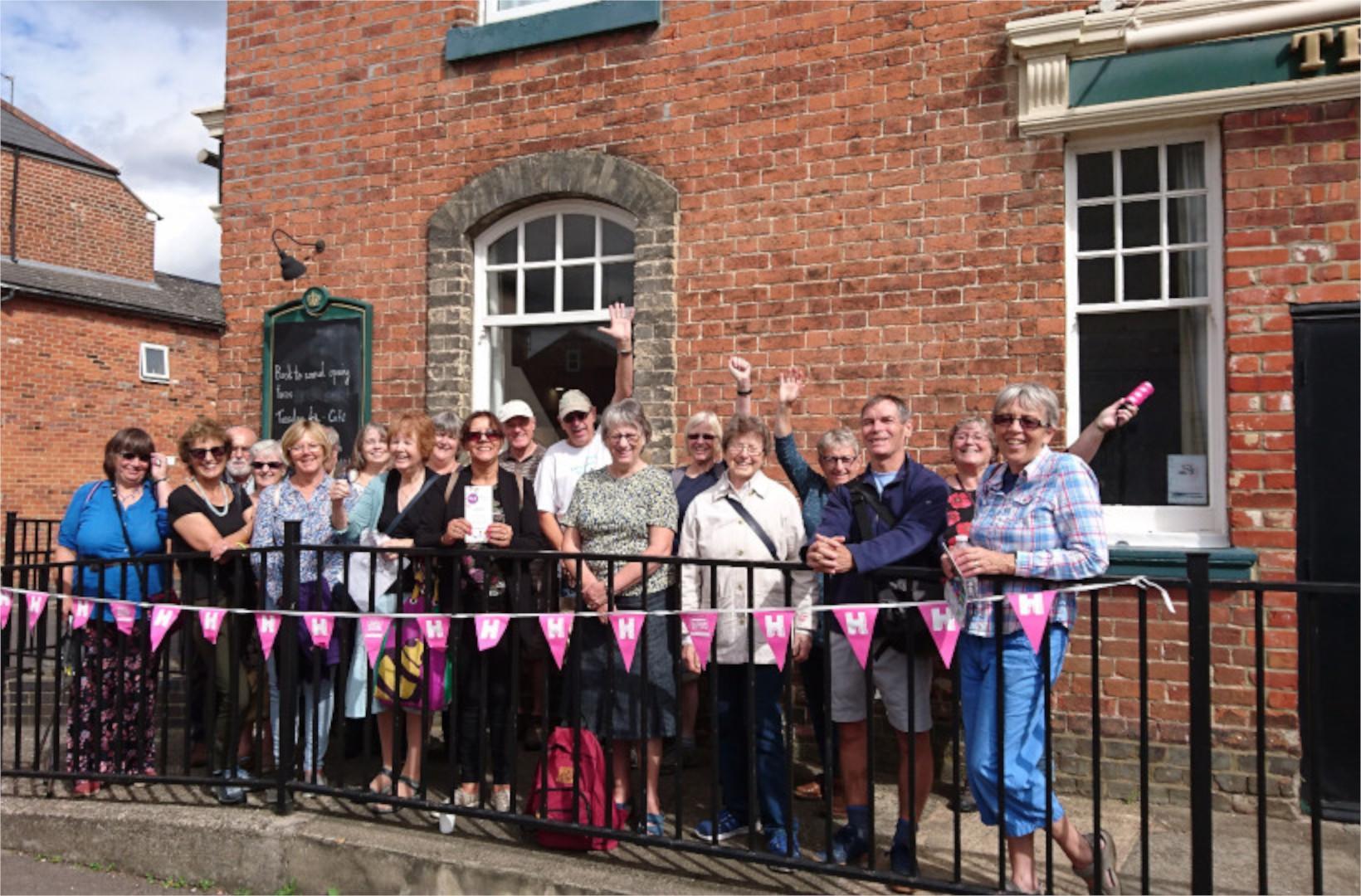Advice on planning your walk from Terry Dixon
Terry Dixon is well-known in our community as the man behind Terry’s Reading Walkabouts. He’s created dozens of themed walks around Reading, taking in some of the great stories the town has to tell. And he’s offered up some advice on how you can plan your landmark-led walks:
“My best advice is threefold:
- Take different routes. Don't always walk down the same streets to get somewhere, e.g. not many people know or use Church Street, a great safe walk through from London Street to Southampton Street and interesting buildings to look at on the way!
- Look up. Safely. Especially when walking down Broad Street (ignoring the shop fronts). Make a note or take a photo of the buildings then research when you get home.
- If you can't or don't want to walk around some areas right now, you can do a Reading Google Virtual Walk of wherever you want to go…
I plan my walkabouts in the Autumn/Winter from the comfort of my front room (once I know my theme and have done the research on buildings/people etc.). You can plan simple virtual walks via Google Maps – it’s quite intuitive to use and you can use this template as a starter to plan any virtual or actual walk you want anywhere.

Finally, once you have your actual or virtual route mapped out, you can zoom in (you can use Map or Satellite view) to actual look at buildings etc.
There are a few constraints
- You can only enter a maximum of 10 destination points in Google maps. It might be best to start with no more than 9, so you can play about with their order. And remember that if you want it to come back to where you started, your first and last points must be the same place. This is a lot easier than it sounds!
- Make sure you choose (and stay on) the “Walking” symbol. Google maps might surprise you and take you up a footpath that you didn't know existed as it has for me!
- Google maps is very good at only showing “designated” footpaths, so it may send you all the way round somewhere like Prospect Park rather than knowing you can just walk directly across it. And some new paths don’t always show up on their routes.
As with all things, practice makes perfect. And practice teaches you a few other lessons, too!
- Make use of landmarks on Google maps – pubs, cafes and other businesses can sometimes help identify where you are better than street names.
- If your route takes in any rural areas, think about how these can change with the seasons and the weather. You’d be surprised the number of streams that you can easily walk over in summer that you can’t in winter – but Google maps doesn’t always take that into account.
- On a similar note, think about the right footwear and clothing. I’ve had to turn around on at least one walk because I suddenly needed wellies I didn’t have to get through a particularly bad patch.
- Think about time and distance – if you’re planning a walk that’s away from your house (keeping in mind the current Covid-19 restrictions, of course) you should always remember to include the time it takes to get to your starting point, not just the length of the walk itself. It might get dark - or you might get a parking ticket!
Explore and enjoy!”
